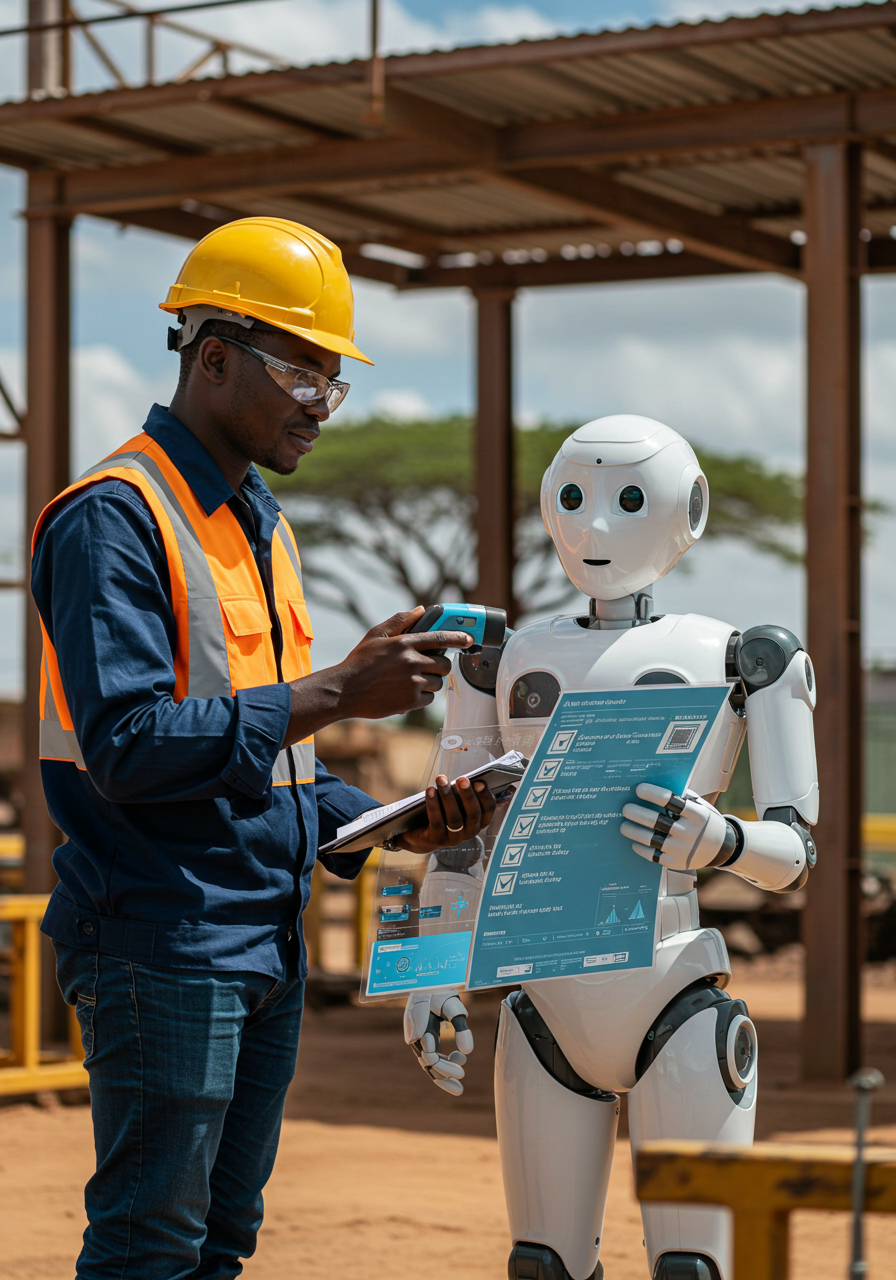
In a rapidly changing world, workplace health and safety must evolve with technology. This
year’s theme of the World Day for Safety and Health at Work: “Revolutionizing Health and Safety; The Role of AI and Digitalization at
Work”, challenges us to rethink how we protect lives on the job, especially those of us in the energy and engineering sectors.
Today, safety is no longer just about protective gear and safety drills. It’s about leveraging
smart technology, data, and automation to prevent incidents before they happen and create work environments that protect people and boost productivity.
If you’re wondering how AI and digitalization can improve health and safety in companies,
here are 10 practical steps that can be implemented.
1. Predictive Analytics for Risk Prevention
AI can analyze historical incident reports, weather patterns, and machine usage data to
predict potential risks, helping companies prevent accidents before they occur.
2. Real-Time Monitoring with IoT Sensors
Install Internet of Things (IoT) sensors on workers’ gear, machinery, and throughout facilities to detect hazardous conditions like gas leaks, high temperatures, or equipment malfunctions instantly.
3. Drones for Site Inspections
Drones offer a safe alternative for inspecting high-risk areas like offshore rigs, transmission
towers, and pipelines, reducing the need to send workers into dangerous environments.
4. Virtual Reality (VR) Safety Training
VR simulations can replicate hazardous scenarios like equipment failures or fire outbreaks, helping workers practice emergency responses safely and effectively.
5. AI-Driven Predictive Maintenance
Use AI to predict when equipment needs servicing or replacement, preventing sudden
failures that could lead to injuries or operational shutdowns.
6. Digital Twins for Facility Management
Develop digital replicas of work sites to simulate real-time operations, monitor wear and tear, predict potential hazards, and plan safer maintenance schedules.
7. AI-Powered Wearables for Workers
Provide smart helmets, vests, or wristbands that monitor workers’ fatigue levels, heart rates, posture, and exposure to dangerous environments.
8. Smart Access Control Systems
Introduce AI-based facial recognition or smart badge systems to control and monitor who
accesses high-risk zones, ensuring only trained personnel enter restricted areas.
9. Centralized Safety Dashboards
Create centralized digital dashboards that consolidate data from IoT sensors, maintenance logs, inspections, and incident reports for real-time safety management.
10. Chatbots for Safety Queries and Updates
AI chatbots can serve as 24/7 safety assistants, answering employees’ questions safety
protocols, emergency procedures, compliance requirements, and company policies
on-demand.
WHY THIS MATTERS FOR NIGERIAN ENERGY AND ENGINEERING COMPANIES
Nigeria’s energy and engineering sectors are vital to national development, but they are also among the most hazardous industries.
With aging infrastructure, challenging environmental conditions, and human factors,
companies need smarter solutions to safeguard lives, protect assets, and maintain
operational efficiency.
By embracing AI and digitalization:
1. Risks are identified earlier.
2. Responses are faster and more coordinated.
3. Training becomes more engaging and effective.
4. Workplaces become not just compliant, but genuinely safe.
Join us as we keep moving beyond traditional methods to revolutionize safety through
innovation.






